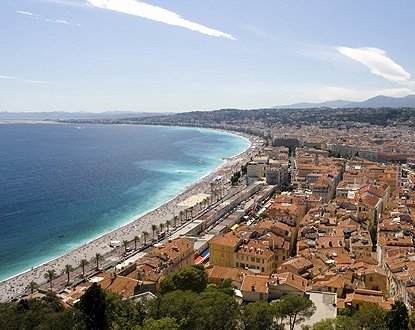The indicators of the azuréenne economy (in the first half of the year) are in the red, even if we cannot talk about a disaster. Except for the significant growth (+5%) in the life sciences sector located in the Grasse basin, the rest of the department remains stagnant.
A lack of growth means, as we learn from Economics 101, a slowdown in investments, household consumption, and a rise in unemployment.
This is what the figures presented by the entrepreneurial “politburo” (Bernard Kleynhoff, president of the Chamber of Commerce and Industry, Jean-Pierre Galvez, president of the Chamber of Trades and Crafts, Georges Bisson, president of the UPA, Yvon Grosso, president of the UPE, Jean-François Agostini, director of territorial development) showed during the economic barometer.
Moreover, the economy of the region, focused on real estate and tourism, can only follow the cycle of economic conditions, and even so, it benefited from the return of Scandinavians following the Arab Spring and its consequences.
In short, if government policy has been criticized, local decision-makers have not told us much about their ability to reverse the trend.
Making observations is good, highlighting difficulties too, but having a few innovative proposals would be even better.
It is never the complainers (also a very popular profession) who have moved things forward.
Nor can it always be the public investment policy, which in the President (of the Metropolis)-Mayor (of Nice) Christian Estrosi has the most devoted student of Keynesian doctrine (to his credit) during lean times to support employment and social cohesion: hundreds of millions of euros have been invested in various projects and event-driven policies which recently, after popular sports and entertainment events, saw in the exhibition dedicated to Matisse a cultural tourism initiative, a high value-added sector prized today.
Here too it must be said: caution! There is a balance to maintain and respect.
While waiting for the results of the OIN of the Plaine du Var and its 30/30/50 thousand jobs in the next 10/20/30 years (which leaves room for adjustments to these forecasts!) in the innovative economy professions (for the moment we hear about Ikea and Cap 3000) the President-Mayor cannot continuously pull new infrastructure projects out of a hat, given financial constraints.
If the debt situation of the Metropolis is manageable (as just confirmed by the Regional Chamber of Public Accounts), it remains true that debts are debts and, sooner or later, they will need to be paid.
Finally, if we want to look to the future with confidence and optimism, we can always refer to Berthold’s law: after the rain, only the sun can come.


